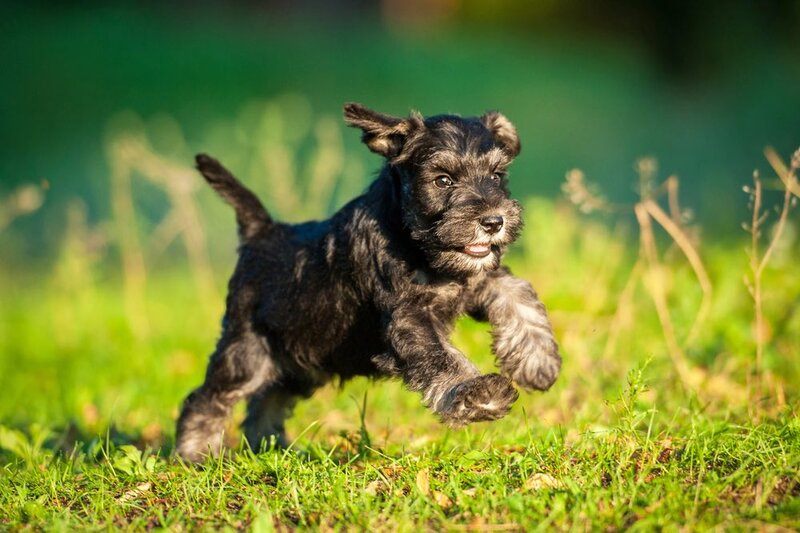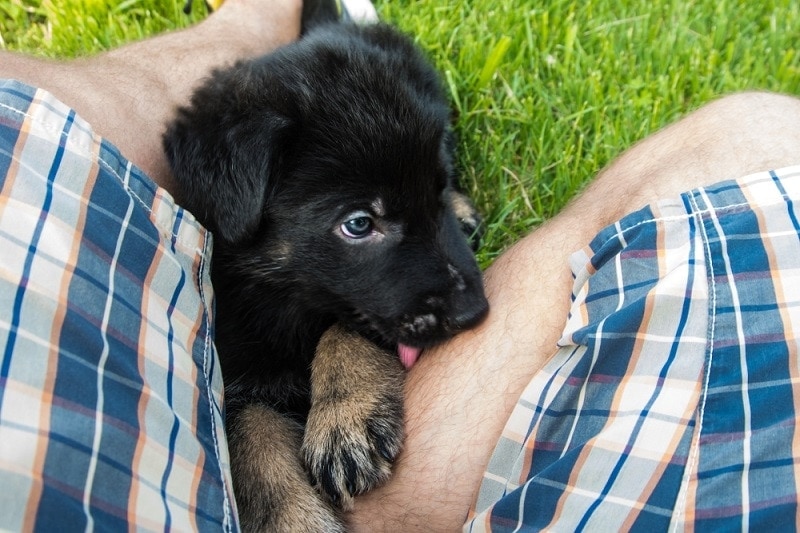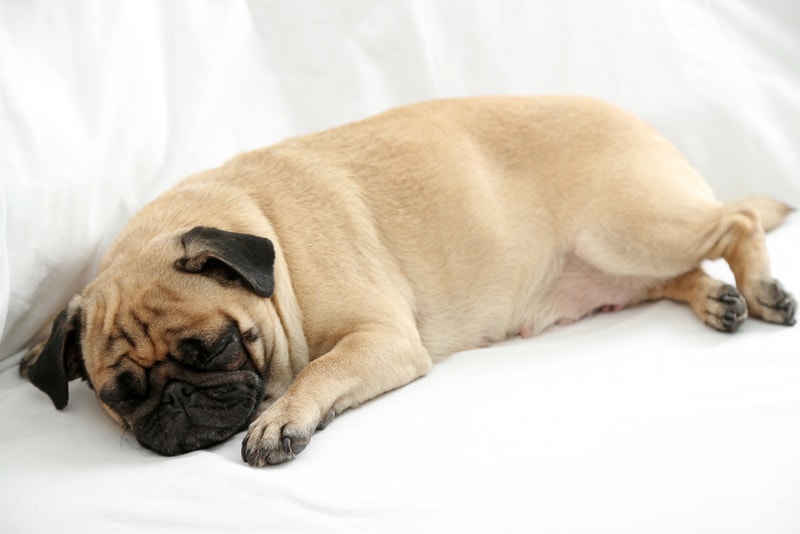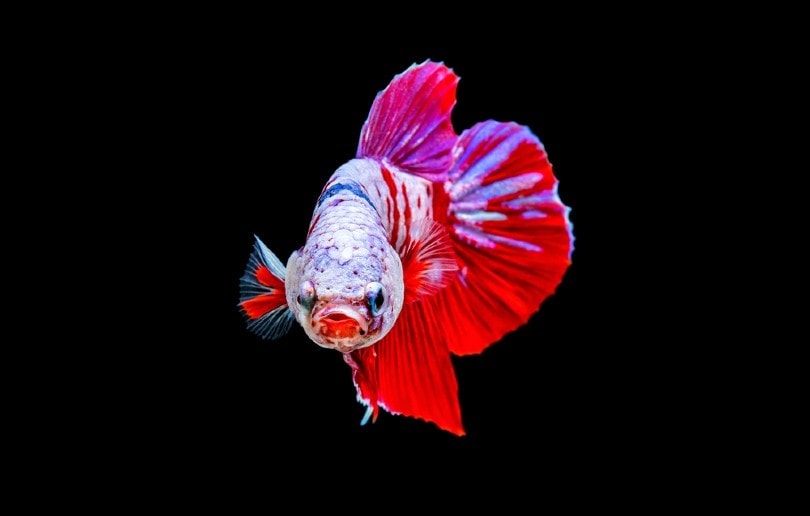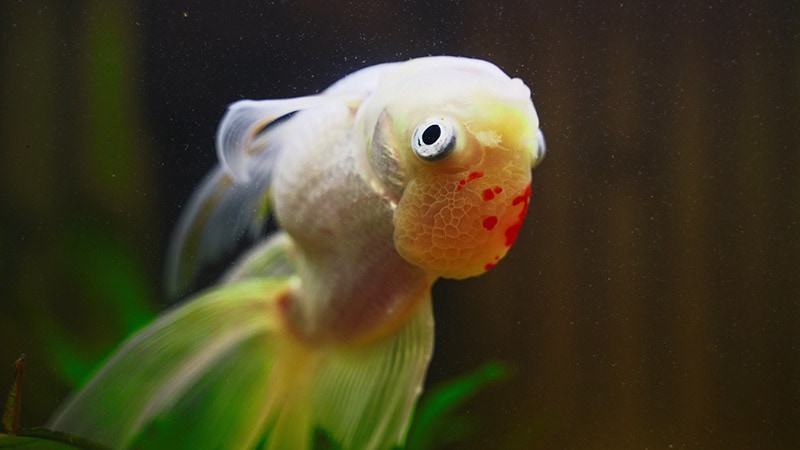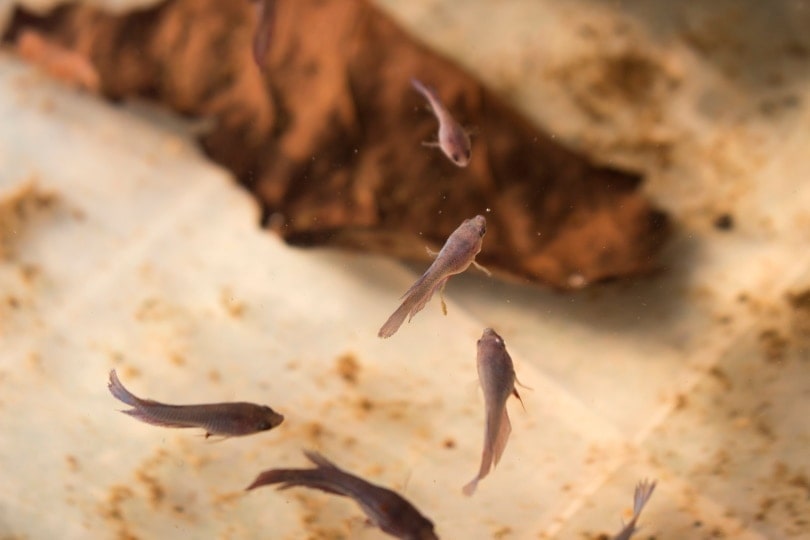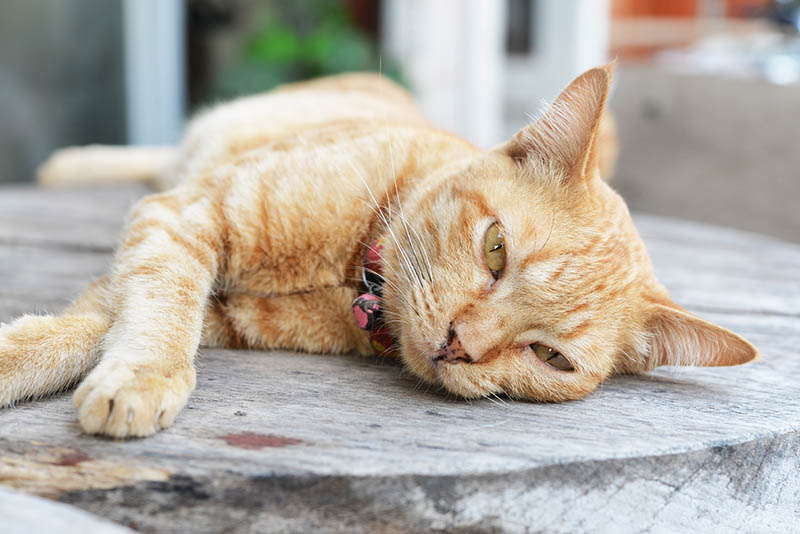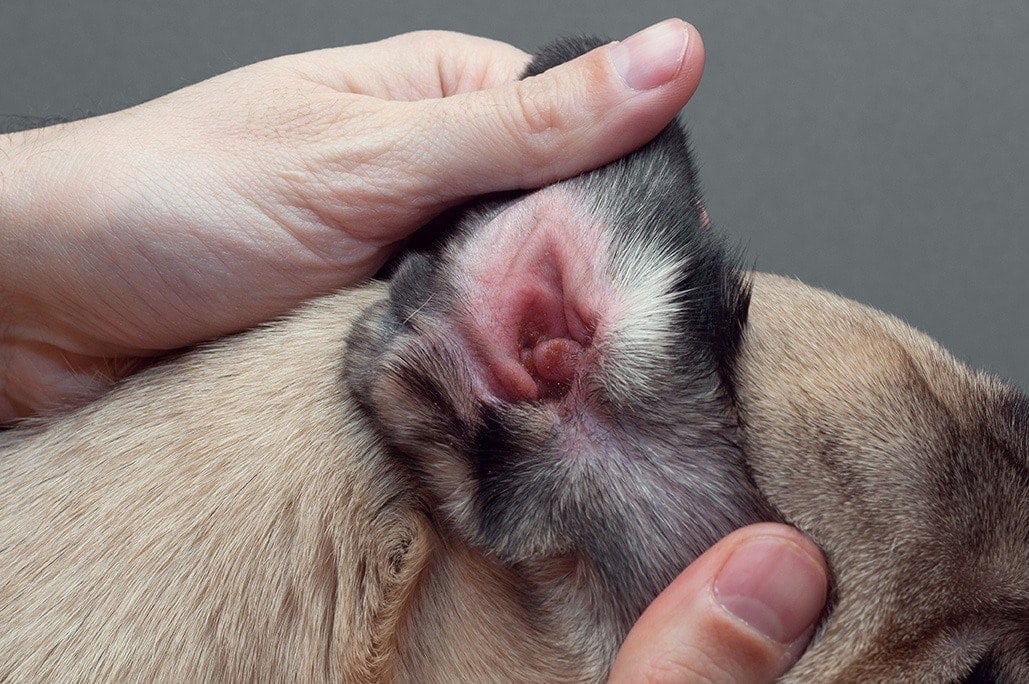How to Potty Train a Pug: 11 Expert Tips
By Ashley Bates
Updated on
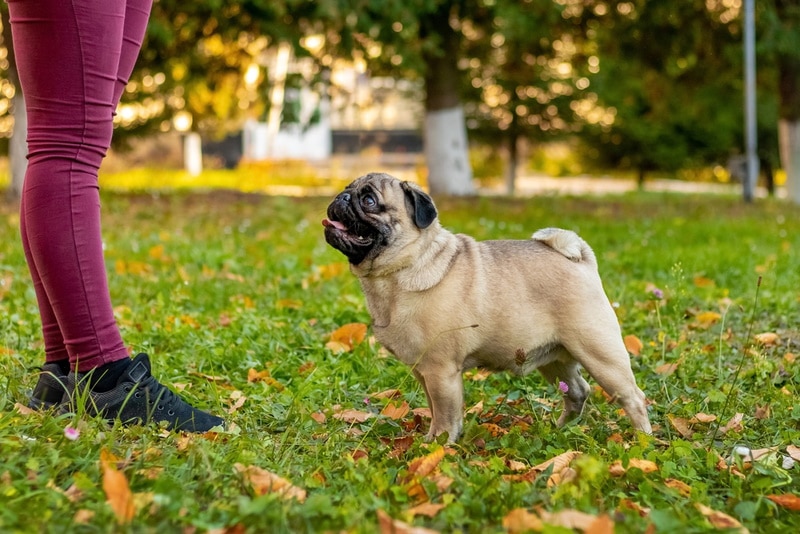
Potty training a dog can be challenging, especially if you’re new to the task. If you have a loyal, lovable Pug, there are some upsides and downfalls when it comes to potty training. Their personalities are both compatible and resistant—we’ll discuss how.
Remember that every Pug will be different. A method that will work for one might not work for another. Use your best judgment and choose the teaching style and techniques that achieve the quickest, most efficient results.
Let’s get into it.
The 11 Tips for Potty Training a Pug
Potty training can be a big to-do at first. Your puppy is so tiny and just getting adjusted to the ways of the world. There is so much to explore, so much to smell, and so much to pee on! Teaching your pup to do their business outside can take months.
So just remember to stay patient and consistent.
1. Choose Your Teaching Method & Tools
Everyone will prefer a different teaching style. You can take your Pug out at scheduled times, use kennels and crates, limit space, or put bells on your door—the methods are endless. We highly recommend reading online for some great ideas before you choose.
E-collars can be useful tools when used correctly. You can use it to alert your puppy if they start to sniff around. This small interruption can get their attention long enough to get them outside. Then, when they feel the sensation, they will associate it with the outdoors.
You can use e-collars in a variety of scenarios. Often, they have a combination of beeps, vibrations, and shocks. You can turn the intensity up or down. Some have different settings and functions, so knowing what features a collar has is essential.
We recommend starting with beeps or vibrations to get their attention. Shocks can cause a negative reaction, making them fearful. It can sometimes make the issue worse. So, use tools with caution.
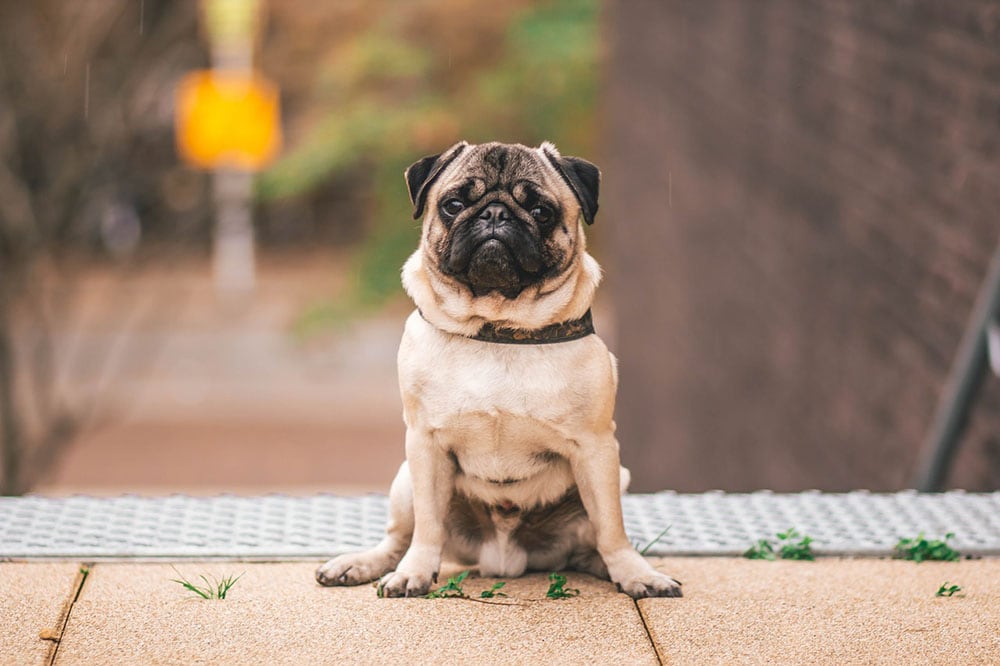
2. Get Your Gear
When your Pug needs to go out, leash training is essential. Harnesses are much better than collars for several reasons, but for Pugs, this is especially important. This is a brachycephalic breed with a shallow muzzle and protruding eyes.
Harnesses are much better for the job. Having tension on the neck by using a leash and collar can put pressure on the esophagus. Don’t get us wrong, having a collar is necessary for tags and identification purposes, but for the purpose of taking your Pug outside or for walks, harnesses are better.
Harnesses fit comfortably around the body evenly distributing pressure. Buying a perfect fit is a must, so be sure to measure, measure, measure.
Retractable leashes should be avoided—especially during early training. These leashes can be dangerous and your pup can be harder to control. Buying a shorter, but sufficient leash will help keep your dog nearby.
We don’t recommend tying your Pug out on a cable unless they are directly supervised.
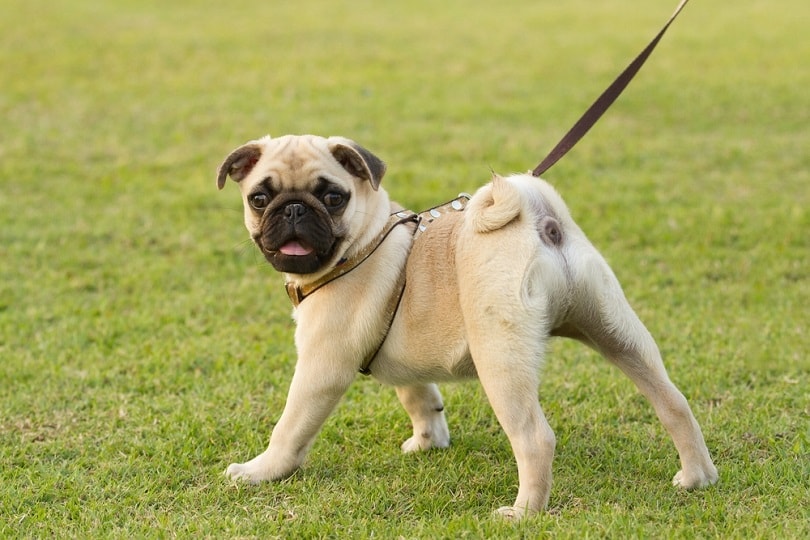
3. Keep a Timed Schedule
When your puppy is small, it must go out according to age. Here is an example of a well-timed schedule.
| Age | Time for Potty Breaks |
| 8 weeks | 2 hours |
| 10 weeks | 3 hours |
| 12 weeks | 4 hours |
| 14 weeks | 5 hours |
| 16 weeks | 6 hours |
| 24 weeks | 7 hours |
| 28 weeks | 8 hours |
This isn’t a perfect chart, of course. Your Pug will go whether it’s on the itinerary or not! You should always look for signs your pup has to go, even if it’s been less than the maximum amount of time.
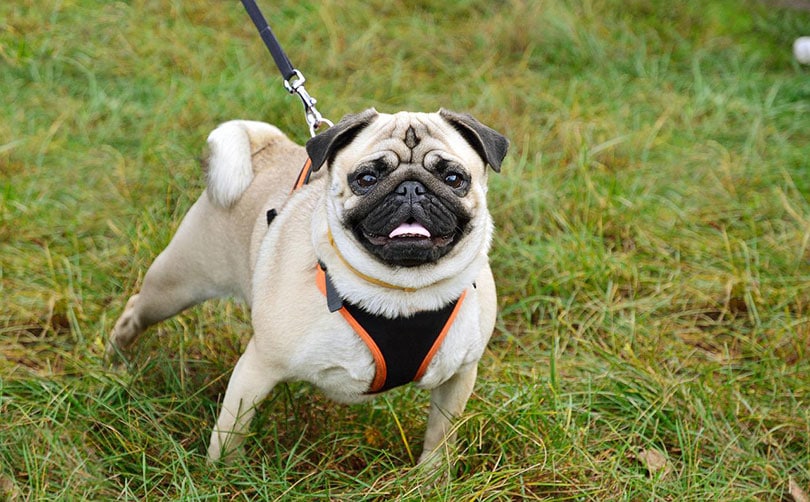
4. Choose the Same Spot
Consistency is essential for any puppy learning to potty outside—but it’s especially crucial for Pugs. They thrive on routine and learn much faster when things are repetitive.
Dedicate a specific part of your yard that you will guide your puppy to each time they need to go outside. This will make things easier to clean up, and your pup can adjust to the routine more quickly.
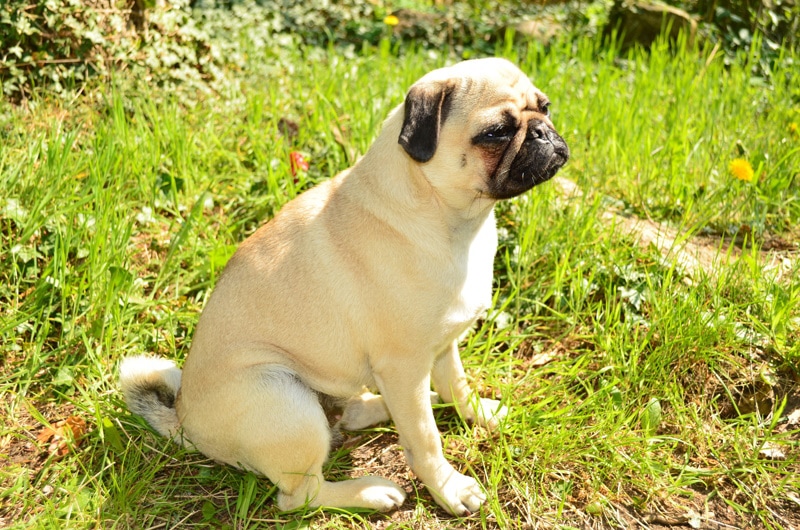
5. Limit Space
When your puppy is learning, limiting space is a must. The wider the spaces they roam, the easier it will be for accidents to happen. When your Pug is out, keep a close eye on them. When you aren’t directly supervising, have an enclosure or space designated for them.
Many kennels have separators you can use while your puppy is very small. You won’t want to use a kennel that is too big, as they might use the bathroom inside of it. Limiting their space makes them less likely to use the bathroom since dogs don’t like to mess where they sleep.
If you were there and able to supervise, you can let your puppy roam around or snuggle up with you. Just close off the room you were in to limit access to the rest of the house.

6. Go Out After Meals
You can tell so much about when a puppy needs to go based on their body language. Your pup should be ready to do business about 20 to 30 minutes after meal time. You might notice them sniffing around or getting antsy. It’s time to visit the potty spot.
Taking your puppy out consistently after meals will help you stay on schedule with their bowel movements. Plus, it creates a routine. Your pup will get the swing of things, and soon—they will put two and two together.
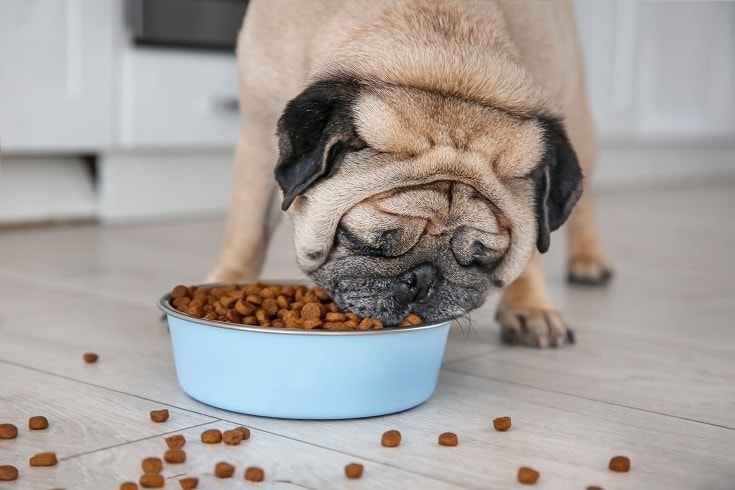
7. Watch for Signs
You may or may not be aware of all the classic and not-so-known signs your pup needs to potty.
So, here are a few things to look for:
- Sniffing around
- Restlessness
- Circling
- Whimpering
If your puppy is getting the wiggles, it’s better to take them out than to let them have an accident. They may not go at all, even when you’re sure they will. It’s just part of the process.
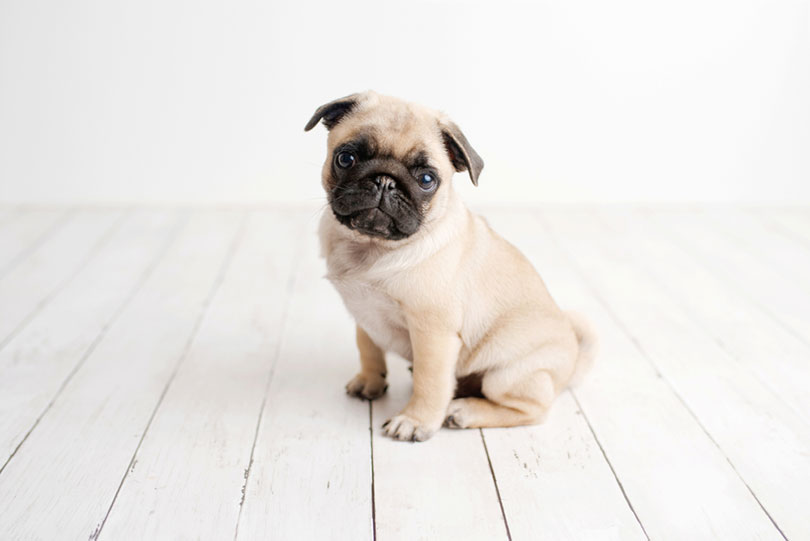
8. Choose a Word or Words
It would be best to have a cue word to signal your pup to go out. They should learn to associate the word with the action. You can use something simple like, “potty.” Or, you can pick something else like, “Go outside.”
Whatever it might be that rolls off the tongue best for you, go with it. Just remember not to use long strings of words, as this can confuse your puppy. Once your dog learns the phrase or word, it will associate the behavior with it and act accordingly.
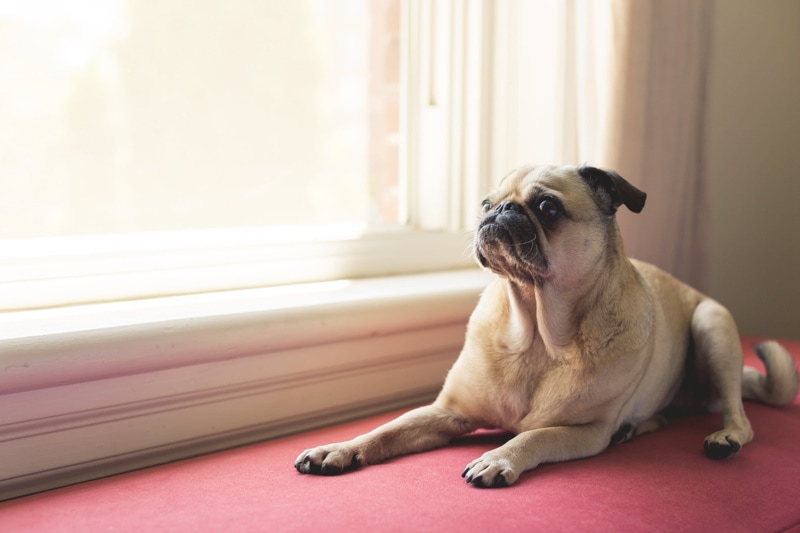
9. Use Positive Reinforcement (and Treats!)
If your dog has an accident on the floor, no need to rub their nose in it. Stick to the positive side of things, and note how well your Pug is doing otherwise.
Pugs are incredibly sensitive to your moods. These happy-go-lucky dogs never require negative punishments. That means that you should always use positive reinforcement from a very early age, and your Pug will respond to it very well.
Not only will your Pug respond well to praise, it will gladly take a tasty treat off your hands. Stock up on bite-sized training treats and reward them when they actually go potty outside to increase motivation!
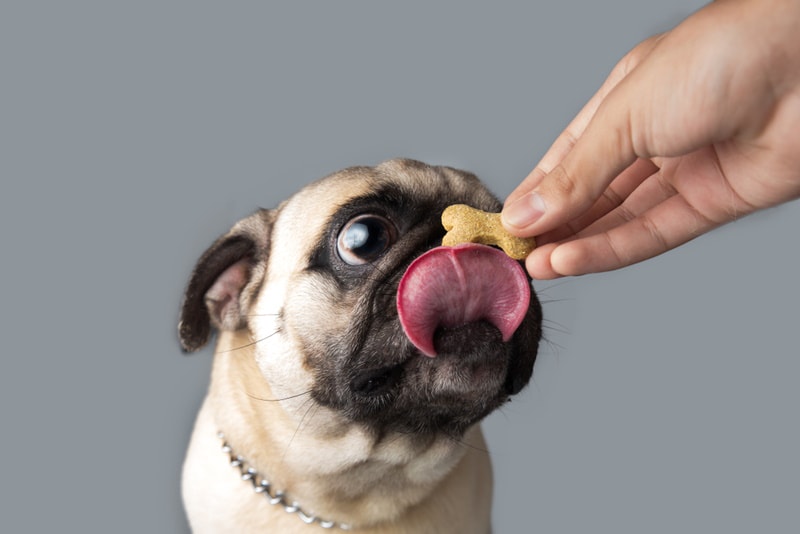
10. Try to Stay Away from Puppy Pads
Puppy pads are a very useful tool in their rightful place. The problem with puppy pads is that it can confuse some dogs and prolong the potty training process. After all, if you have a toilet in your house and an outhouse outside, which would you be more likely to use?
It is the same for our dogs.
It can affect people as well! If you start using puppy pads too often, it can make you lazy about taking them out as you should because you know that there is another option. So if you can avoid using puppy pads or using them too much, it will speed up the process.
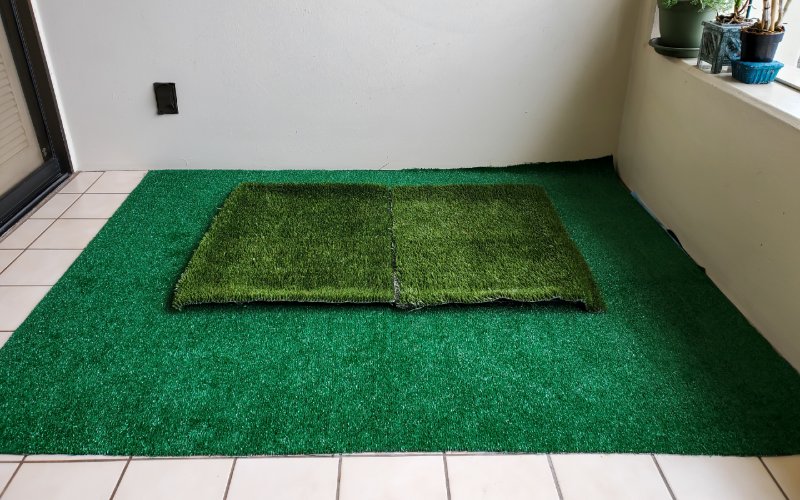
11. Pace Yourself
Your Pug puppy is learning. And so are you! You are learning their routine, schedules, and body language. Since every dog is different, it’s hard to say exactly how long puppy potty training will last.
For some, they can catch on very quickly, while others take a little longer. In total, it shouldn’t be more than a year before your dog is successfully going to the bathroom outside. Just keep in mind that accidents do happen.
Even fully-grown potty-trained adult Pugs can have accidents in the right circumstances. Just remember to keep in mind that this, too, shall pass. Keep up the good work, Pug parent!
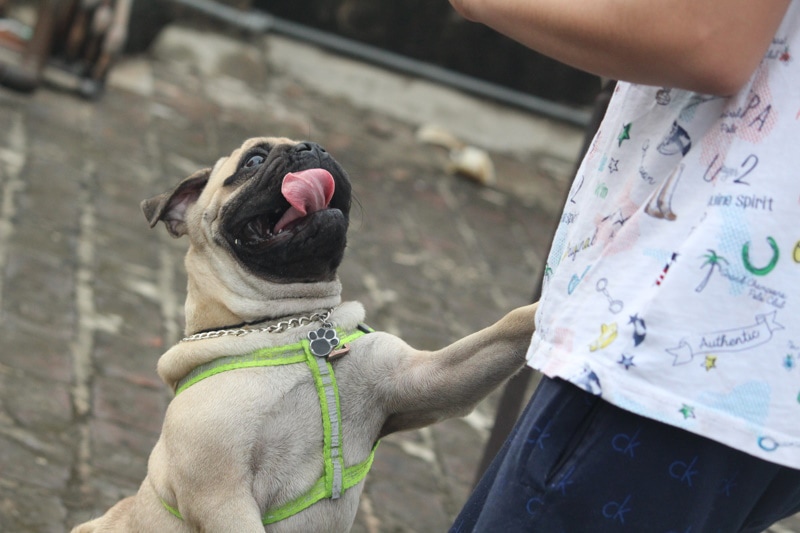
Conclusion
Potty training a Pug is going to be a process—you’re bound to get frustrated or disheartened wondering when it’s going to end. Don’t worry, your Pug might take a little bit to catch on, but they will get the hang of it before you know it.
If you are a new pug owner, know this is just one stage of many to come. Your Pug puppy will be fully potty trained if you work with them consistently and appropriately.
Featured Image Credit: MVolodymyr, Shutterstock

